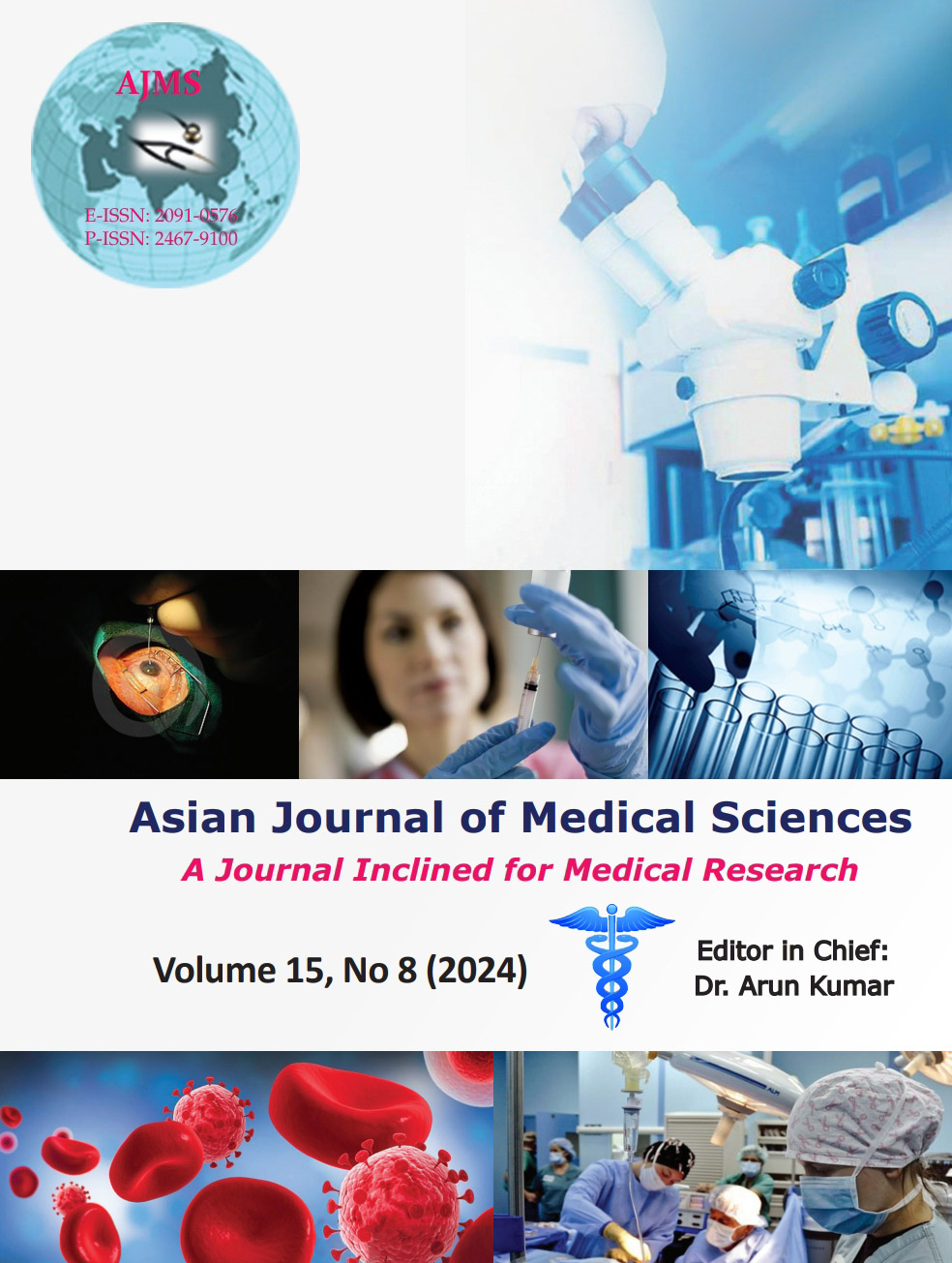Blood group distribution and its association with bleeding time and clotting time among medical students
Keywords:
Blood group; Bleeding time; Clotting timeAbstract
Background: Blood group, bleeding time (BT), and clotting time (CT) are routinely performed tests in the hospital, especially before any surgeries and blood transfusion.
Aims and Objectives: The objective of the study is to see if there is any association of blood group with BT and CT and the gender difference in BT and CT.
Materials and Methods: A cross-sectional study was conducted among 132 medical students of 1st year in the hematology laboratory of the Department of Physiology in KIST Medical College from June 2022 to September 2022. The blood group was determined by a simple agglutination method. BT was determined by Dukes method whereas CT was determined using capillary tube method. Data were analyzed using SPSS-20 software. The difference in BT and CT among various blood groups was done using the ANOVA test and P≤0.05 was considered significant. Student’s t-test was used to find the association of gender with BT and CT.
Results: Both BT and CT were found to be more in males than females. However, the difference was significant only in the mean BT (P=0.05, Table 2). There was no significant difference in the mean BT among various blood groups but CT was found to be significant (P=0.05).
Conclusion: Our study showed the tendency of bleeding to be more in blood Group B individuals. Multicentric study including a larger population with plasma level of von Willebrand factor might be helpful to verify findings and identify the risk group.
Downloads
Downloads
Published
How to Cite
Issue
Section
License
Copyright (c) 2024 Asian Journal of Medical Sciences

This work is licensed under a Creative Commons Attribution-NonCommercial 4.0 International License.
Authors who publish with this journal agree to the following terms:
- The journal holds copyright and publishes the work under a Creative Commons CC-BY-NC license that permits use, distribution and reprduction in any medium, provided the original work is properly cited and is not used for commercial purposes. The journal should be recognised as the original publisher of this work.
- Authors are able to enter into separate, additional contractual arrangements for the non-exclusive distribution of the journal's published version of the work (e.g., post it to an institutional repository or publish it in a book), with an acknowledgement of its initial publication in this journal.
- Authors are permitted and encouraged to post their work online (e.g., in institutional repositories or on their website) prior to and during the submission process, as it can lead to productive exchanges, as well as earlier and greater citation of published work (See The Effect of Open Access).




